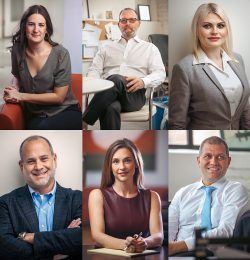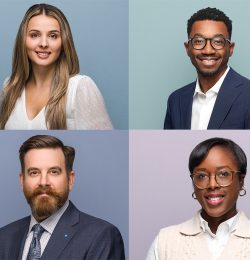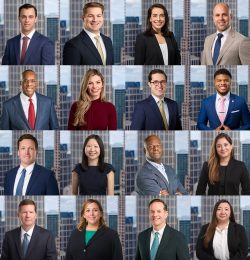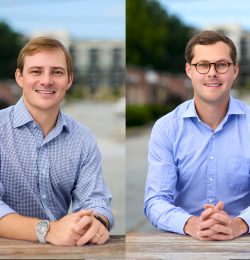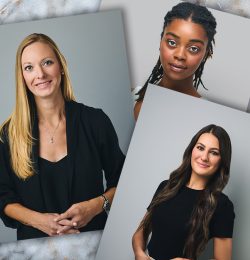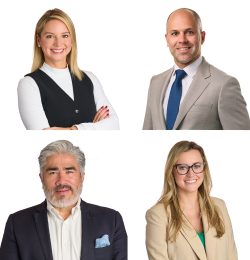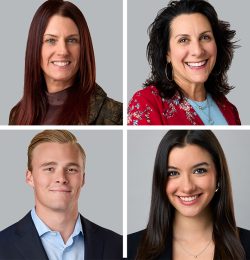CORPORATE HEADSHOT PHOTOGRAPHY FOR GROUPS AND TEAMS
CK Headshots Atlanta specializes in on-site corporate headshot photography for groups & teams.
An on-site headshot session might be on location at your office, corporate event, or conference. We also offer options for shooting in our studio.
CORPORATE HEADSHOT PHOTOGRAPHY FOR GROUPS AND TEAMS
CK Headshots Atlanta specializes in on-site corporate headshot photography for groups & teams. An on-site headshot session might be on location at your office, corporate event, or conference. We also offer options for shooting in our studio.
ON LOCATION, STAFF & TEAM HEADSHOTS ARE OUR SPECIALITY
We offer a wide variety of services both in studio and on location.
CK Headshots Atlanta offers large and small group, staff, and team headshots in studio or on location at a site of your choice.
We also specialize in on-location headshots at events, meetings, and conferences. We regularly photograph full staffs of 5, 10, sometimes even 100 or more individuals at a time.
We strive to maintain the same high standards in our large-volume headshot sessions as we do in our individual sessions. To ensure this, all photography and retouching are handled personally by our owner, and every headshot is captured using the same professional lighting setup used in the studio.
Essentially, we bring the studio to you!
-
ALL PHOTOGRAPHY IS DONE BY THE OWNER
All of our corporate headshot photography is done by our owner, a professional headshot and portrait photographer with over 20 years of industry experience. -
STUDIO LIGHTING ON LOCATION
We use the same professional lighting setup used in studio to photograph our on-site headshot photography sessions. -
THOUGHTFUL COACHING
We understand how unnerving a trip in front of the camera can be. We thoughtfully guide each subject through the process.
The following features are included with every package:
CHOICE OF LOCATION
Choose to hold your headshot session in studio or on location. On-location headshots could mean your office, or something like a corporate event or conference.
ON SITE OR GALLERY PROOFING
Choose to have your subjects proof and select their photos on-site, or after the session via an online image gallery.
TOP-NOTCH PHOTOGRAPHY
All photography is done by our owner, a pro photographer with 20 years of experience coaching and photographing people of all shades, shapes and sizes.
CUSTOM RETOUCHING
Every package includes in-house professional retouching—acne or annoying blemishes, extra weight added by the lights or camera, are all taken care of after the shoot.
LOCATION & GROUP SESSION PRICING
We offer two pricing models: one for staff, event, or team headshots where a predetermined number of participants is already known (referred to as “Team Headshots”), and another for event or conference headshots where the exact number of participants is often unknown (referred to as a “Headshot Station”).
"TEAM HEADSHOT" RATES
STANDARD LOCATION SESSION FEE
$275.00
This is our base session fee. First 5 individuals are $100.00 each.
PER PERSON RATE 6-10
$75.00
Rate per person for 6-10 individuals on location after standard session fee.
PER PERSON RATE 11-20
$65.00
Rate per person for 11 – 20 individuals on location after standard session fee.
PER PERSON RATE 21-30
$55.00
Rate per person for 26 – 40 individuals on location after standard session fee.
"HEADSHOT STATION" RATES
HEADSHOT STATION DAY RATE
$1000.00
Full Day (up to 8 hours)
HEADSHOT STATION HALF DAY RATE
$550.00
Half day up to 4 hours.
PRICE PER RETOUCHED IMAGE
$30.00
Rate per retouched image for up to 75 subjects.
PRICE PER RETOUCHED IMAGE OVER 75 SUBJECTS
$25.00
Rate per person for 26 – 40 individuals on location after standard session fee.
HAIR / MAKEUP ADD-ON
$750.00
Full day of hair and makeup. Other options available please contact for details.
PLEASE NOTE: 50% deposit/retainer fee required upon booking to reserve your date and time. The remaining balance is due after you approve your final retouched images.
Turn Around Time: After the shoot, a gallery link to the untouched photos is emailed to you within 2-3 days for review and to make selections for retouching. The final retouched images may take up to 1 to 2 weeks to be delivered via download. Images can be rushed for an additional fee.
Rates do not include travel expenses for shoots outside of the Atlanta metro area. Deposits are non-refundable. If you need to cancel for any reason, CK Headshots reserves the right to make rescheduling decisions on a case to case basis. Deposits and final payments can be made by direct deposit, check or on-line via our invoice system. After reviewing your final retouched photos, the remaining balance must be paid to receive your download link. Clients under 18 must have a parent or legal guardian present at all times.
THE ART OF THE GROUP HEADSHOT SESSION
There’s definitely a special art to both on-location and volume headshot photography for groups. Only part of it is the photography itself. The other part is the process of producing and planning a session on location or with large numbers.
You can find a detailed article on things to consider when planning a session in our blog. With larger groups, the planning and logistical details are things learned only through experience. There are technical things like: what kind of space is available onsite to shoot in? Is the space large enough to make use of a longer focal length lens? And then there are scheduling questions like: how many individuals can we shoot in one day?, etc. And then there’s the technical photography itself, which I discuss below.
Of equal importance though is how a photographer approaches each subject. For example, a big part of my job is to create a relaxed, laid-back, yet professional environment for each session. I understand some people (most people, really) have a hard time in front of a camera. So I try to walk each individual through the process step by step.
The photography part of it is pretty straightforward, really. There are a few things a great headshot photographer should know and there are a few things a great headshot should be. A great headshot photographer should be organized, personable with an eye for composition and detail. A great headshot should be dynamic, honest, and composed in a pleasing way. It should also be lit well with the focus on the face—more specifically, on the eyes. By dynamic, I mean some contradiction in angles. This is often subtle. In fact, most often, anything more than subtle can look superficial. By honest, I mean the gaze into the camera looks engaged and real. The opposite would be the deer-in-headlights look we’re all familiar with. By composed in a pleasing way, I simply mean the composition of a headshot should draw the eye to the most important element of the image—your face and eyes.
The background or wardrobe should complement your face; it should never distract from it. The lighting needs to be appropriate for whatever mood or feel the client is trying to communicate. There are ways to light things “happy,” like a sitcom, and there are ways to light things for a more refined professional feel. When you put all of these things together—the planning, the shooting, and the directing—successfully, you end up with a great headshot.
OK, so how do we get there?
A successful volume team or staff headshot session takes planning. If you need help planning, we are happy to guide you through this part of the process. There are several strategies we can discuss in detail to make sure everything goes smoothly. If you like to read, there’s quite a bit of information with respect to this on our blog.
Below are a few basic guidelines you can pass along to those participating in your group session.
Basic Guidelines
It really all comes down to a few things: Communicate what you hope to achieve as clearly as possible, follow some basic guidelines, and be open to simple direction.
Hair
You can hire a stylist or take care of this yourself. If you’d like to take care of it yourself, you can style your hair the way you normally would. If you have a specific look that requires a stylist, consider seeing your regular stylist before the session. Flyaways, small gaps, or subtle adjustments can be handled during the shoot or in post-processing without a stylist.
Makeup
Applying makeup as you normally would is totally fine.
Wardrobe
Simple is best. Typically, your wardrobe shouldn’t draw attention away from your face. At most, it should subtly complement it, often through color. Wardrobe completely depends on the nature and scope of the project. For a simple, safe option, a solid-colored top that flatters your eyes always works. Avoid low necklines and busy patterns. Color is fine, but I recommend bringing a more neutral backup option, just in case.
Avoid overthinking or overplanning. Yes, looking your best is important—hire a stylist or style your hair as you normally would, apply basic makeup—but don’t obsess. Most blemishes and hair issues can be fixed on the fly. A stressed-out subject, constantly worrying about the details, is much harder to “fix” than a stray hair.
What do I mean by take very simple direction?
First of all—you don’t need to know how to “pose.” In fact, posing often does more harm than good.
When I say take very simple direction, I mean that I’ll guide you through every step of the process using small adjustments to your natural sitting or standing posture. If you’re experienced and prefer to pose yourself, that’s perfectly fine—I won’t get in your way. But generally, it works like this:
You sit or stand in whatever position feels natural and comfortable. I take a few test shots. Then, I give you some posture suggestions—usually minor tweaks that enhance your look for the camera. For example:
- Shift your weight forward or back
- Straighten your upper body
- Relax or pull back your shoulders
- Turn your head slightly
- Adjust your chin or gaze
Once we’ve established a good posture, I’ll work with you on expression. My goal here is to help you engage with the camera.
Again, if you already know how you want to express yourself, go for it. If I think we should adjust something for the camera, I’ll let you know. I also have a few simple techniques to help clients achieve a fresh, engaged expression.
FAQs
First, we have a good article dealing with this in our blog. Communication is key. Let us know what you are trying to achieve and we will respond back with the necessary questions. A few details you may want to include are, the kind of look you’re going for (solid background, do you want office ambience, action shots, or a particular unique stylized feel). How many people? What’s your space like, do you have room to shoot in? And of course where and when. A lot of the answers are here in the FAQs. But we are happy to address your specific needs. Second, you’ll need to schedule your team. We are happy to answer questions about time per subject, etc. Again, a lot of that is answered below. Before the shoot we suggest sharing the preparation basics on this page with your team. It’s important to let them know that this is a guided process, they don’t need to know how to pose, or sing or dance, or cry on cue. After the shoot we deliver proofs via online gallery. How you choose to make selections is up to you. We’ve found the easiest way, outside of us choosing for you, is to have a dedicated individual choose for everyone. This is especially true with large numbers of 20 or more. For smaller shoots we think it’s okay to be a little more selective.
With respect to schedule and timing, I typically leave this up to the client but I’m happy to guide you. As you can imagine there are an infinite number of ways to schedule these shoots, depending on your situation. If it’s an all day event it sometimes works to simply notify everyone that I’ll be there and let them come over at their own convenience. If you’d like to offer more precise scheduling I’ve found what works best is to schedule people in blocks of 5 or 10 individuals expecting each person to take 3-5 minutes each (at most). At 3-5 minutes per individual (for example with 50 individuals) we are at 3.5 hours to photograph them all. I’ll get to what to do if you have less time below. If you have a full day to work with you can spread the blocks out. If you have less time to work with you can schedule your blocks closer or even back to back. If you have less than 3.5 hours (and 50 people for example) we can get the time per Individual pretty low while maintaining good results. I’ve done a person per minute before and it worked fine.
As far as planning the day I like to get there about an hour early for setup. I can arrive at whatever time works best for your situation. No time is too early for me. I like to get there about an hour before the event to set up. And it takes me about half an hour to break down. I typically only need about a half hour for lunch and a 15 minute break if we are going a full day.
I have an equipment cart I’ll bringing in so I like to avoid stairs if possible. But I don’t have a problem pushing it a little ways if parking requires that I do. But of course, if there’s an easier or closer way to load it all in I’ll always take it.
For the shoot:
I would have each individual hold up a piece of paper with their name and whatever particular way you’d like to identify people (employee number, email, etc.) for the first shot. Typically groups do this by putting a stack of paper and a pen out where I’m set up so each person can write out their info before they step in for photos.
Please let me know if you have any questions about the above or anything else. I look forward to it!
this varies greatly depending on the number of subjects, the style or complexity of the desired image, and logistics. By logistics I mostly mean the art undertaken by the member of your team who’s job it is to gather all of your employees efficiently. In an idea world, where everyone is scheduled perfectly, to be safe I’d set aside at least 1 hour of shoot time for 10 subjects, 2 hours for 20, 3 hours for 30, and a half or full day for anything more. But in practice it’s not always all that easy to schedule perfectly. We are happy to discuss and offer advice for your particular situation. Remember shoot time does not include time to set-up and break down equipment. Add 45 minutes for each.
There are a lot of variables that go into deciding this. If we are doing standard headshots, on a uniform background, it’s possible to schedule each subject for as little as 2-3 minutes. In 2-3 minutes we can typically capture 5 good proofs per individual (5 shots to choose from for retouching). Make sure to account for lunch and a break. Smaller shoots are more forgiving. Just remember the standard group rate is per day. And additional rates are per person.
We deliver all proofs through a password protected gallery that can be shared with other members of your team. We leave it up to the client to decide how they’d like to run the selection process. Albeit not always the most popular way according to individual subjects, the easiest way is to turn it all over to us. Some groups choose to select an individual to be in charge of the section process. Some choose to share the gallery and let each employee choose. The larger the number the less I’d recommend the latter. In our experience It’s much easier and more efficient if a single individual can make the choices.
The first and most important thing is to remember that I’m here to guide you through the whole process. Most people tell me they don’t like having their photos taken. Including myself! I expect that, and do everything I can to make it an easy, fully guided process. Second: Communication is key. Let me know what it is you’re trying to achieve. If you see photos on-line that inspire you, send them over. If there’s a particular mood you’re going for, let me know. If you’re undecided about wardrobe, etc., run it by me. Try to get good sleep the night before the shoot. But, with exception to extreme cases, you don’t need to cancel if you don’t—most of the signs of a poor nights sleep can be edited out. Just be aware that you might need to compensate for your tiredness. But again, I will guide you through. With respect to hair and make-up the vast majority of my clients choose to do their own. If you’d like to have an artist do it for you on site, you can arrange it yourself or, we can help you arrange it at an additional fee. Here are some hair make-up and wardrobe basics: Hair: Fixing your hair as you normally would is perfectly acceptable. If there’s a particular do you prefer that you can’t achieve on your own I would suggest going to your typical do-artist before the session. Flyaways, small gaps or subtle shifts, etc. can be taken care of during the shoot or while post-processing. Make-up: Again, applying basic make-up as you normally would is perfectly acceptable. Remember, this is more like a documentary we’re making than a Kabuki musical. Don’t over do it! Wardrobe: First, if you’re stuck, just ask. I’m happy to answer questions about these things. But it’s not all that complicated. Simple is best. Wardrobe should typically never take the focus from the face, but at most should subtly compliment it, which is most often achieved by color. A solid top that compliments the eyes is nice. Avoid low necklines and busy patterns. Color is not bad. However, for smaller shoots with no wardrobe requirement, I would suggest bringing a more muted alternate just in case. Overthinking, over planning — putting too much thought in to hair, make-up and wardrobe, etc. is something to be avoided. Yes looking one’s best is important. But don’t put too much into it. Blemishes, most hair issues, can be fixed or adjusted on the fly, a stressed out subject, constantly worried that something has been missed, is much harder to fix.If you’re looking for some additional make-up basics, check out this article. For some more basic on how to prepare including hair, make-up and wardrobe tips, you can view my blog post.
Yes and no. How to pose for a headshot is a headshot photography related phrase often searched on google. And the answer is really not all that complicated. Simply because most of what you’ll be required to do, other than stand or sit naturally, is up to me to walk you through. And even then not all that much needs to be done. A few tweaks here and there to your natural posture is often all it takes. A good photographer is in part almost always thinking in terms of composition. It’s up to the photographer to establish the group of angles necessary to serve the end goal. So yes you have to do a little bit of what one may call posing, but no you don’t have to figure any of it out yourself. If you’re more interested in this I have a whole article about it in my blog.
The easy short answer to this is a good photographer makes a good headshot photography for groups. That might sound a little flippant but the point is true — you pay me to make a photo, all you really need to do is cooperate with what it takes to achieve that end goal. And honestly, it doesn’t take all that much on your part. There are a few things you can do leading up to the session that can help, e.g., try and get good sleep, etc., but I wouldn’t stress about these things too much. There’s very little that can’t be coached or corrected. You can view my tips on how to prepare to learn more about this. Outside of the collaborative process between photographer and client there are certainly a few aesthetic qualities that make a headshot or portrait most effective. Although there are differences between headshots and portraits the following applies to both. A good headshot or portrait is dynamic. Just like any other art form, a powerful photograph almost always has a dynamic quality. In headshot terms that might mean the head turned subtly one way while the shoulders are angled another. It might mean creating negative space between an arm and the body or something as simple as shifting the head one way and the eyes another. Lighting can also provide a dynamic quality. Sometimes I’ll shoot subjects straight on, almost perfectly symmetrical and let the lighting and design add in the dynamics. A good headshot or portrait is honest. There’s something I call the honest gaze. This is a feeling of genuineness portrayed by the look or gaze of the subject being photographed. This does not mean intense, or confident or anything else. It means genuine. If your look is genuine, it’s going to by nature also be confident and powerful. A genuine or honest look is usually simply you un impeded by the present circumstances of being in front of a camera. Does that mean you can’t be nervous, well no. It means you need a good photographer to read between the lines, determine your baseline and do what’s necessary to capture it.


